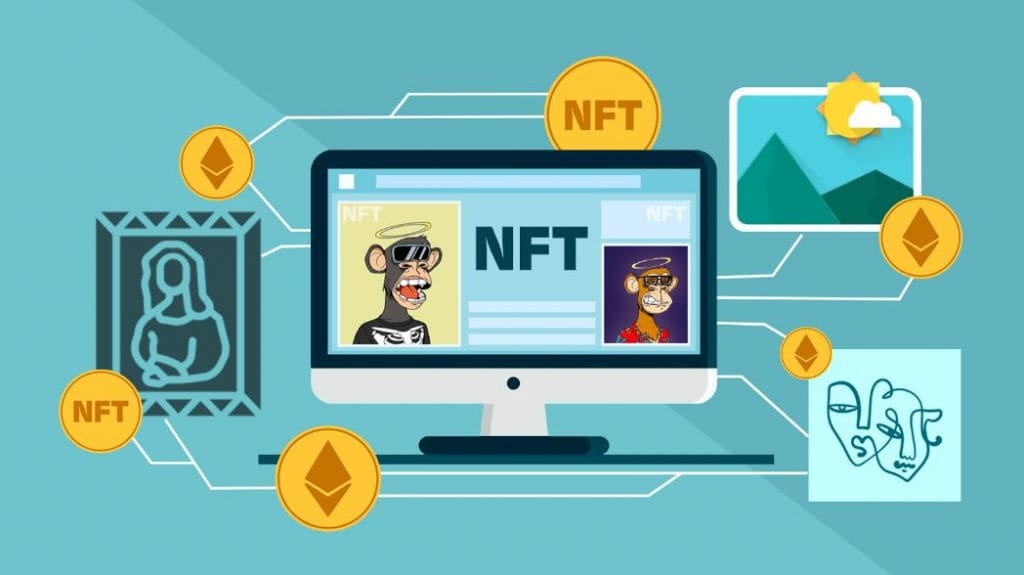NFT marketplace development has come a long way, growing from niche cryptocurrencies to a solid environment that attracts artists, collectors, and curious newcomers alike. But as these platforms evolve, so do their approaches to making money.
For marketplace owners who are facing solid challenges to make the most of their platforms might be looking for effective monetization strategies to use in 2025.
This is easier said than done: creating revenue source perks with maximizing profits and a sustainable ecosystem that supports creators, collectors, and investors alike.
In this post, let’s break down some of the top monetization strategies that really work for NFT marketplaces.
Revenue Streams for NFT Marketplaces
1. Transaction Fees
This is one of the most simple and easy ways for NFT marketplace development experts to generate revenue. It works with a small cut that is about 2 to 5% for a single sale done through the platform.
It becomes easy for owners to scale their platform growth and keep their business operations going. The bigger the marketplace and the more high-value transactions it facilitates, the more this revenue stream grows.
Strategies like these are optimal for open marketplaces with high volumes of activity, like OpenSea and Rarible, where users can constantly buy and sell NFTs.
2. Listing Fees
Listing fees are an alternative to transaction fees, where creators pay to put their NFTs up for sale on the platform. This helps a marketplace maintain quality by deterring low-quality or spammy entries—only creators who are serious about their work are likely to pay to list it. The fee might be a flat rate, or it could be tiered, allowing creators to pay for extra visibility or promotion for their NFTs. This model is effective for curated marketplaces, like Foundation, which emphasizes quality and a selective community over sheer volume. Listing fees add a layer of exclusivity and give marketplaces a more controlled revenue source while keeping the content interesting for collectors.
3. Subscription and Membership Fees
Some NFT platforms offer subscription or membership options that come with perks for users. Subscribers might get special access to exclusive drops, advanced analytics, or enhanced visibility for their NFTs. Buyers, too, might enjoy benefits like early access to popular collections or limited-edition NFTs. For the marketplace, these subscriptions create a steady income stream, and for members, they provide added value and an incentive to stay loyal. Platforms like SuperRare use this model effectively with their collector circles, which benefit dedicated users, giving them a richer experience and a sense of belonging in the community.
4. Gas Fee Optimization
Gas fees – or transaction costs on the blockchain- can be an unexpected barrier when purchasing and selling non-fungible tokens (NFTs). While transaction costs fluctuate and sometimes become prohibitively expensive during periods of high activity, NFT marketplaces such as Immutable X have made transactions cheaper by optimizing gas fees with subsidies using more efficient smart contracts or offering Layer-2 solutions in order to decrease transaction fees for cost-conscious users this approach makes all the difference and drives increased activity across its platform.
5. Royalties for Creators
Royalties are an attractive feature for creators because they allow artists to keep earning even after their work has been initially sold. With royalties, every time an NFT is resold, the original creator earns a percentage of the sale, creating a passive income stream. Some marketplaces support royalties by taking a small cut to facilitate these resale payments. It’s a win-win: artists stay engaged with the platform, and collectors feel good about supporting creators in the long term. Platforms like Foundation and Rarible are great examples of royalties that have helped attract serious artists who want to establish ongoing revenue from their work, even if it changes hands multiple times.
6. Advertising & Sponsored Drops
For larger NFT marketplaces with heavy traffic, advertising, and sponsored drops offer another revenue stream. This could mean allowing creators to pay for “featured” placements on the homepage, sponsoring a special drop, or buying ad space within the platform. Creators and brands looking for exposure get the benefit of added visibility while the marketplace generates extra revenue without needing to change its core functions. This approach works well for platforms like KnownOrigin, where featured NFTs gain more attention, and creators can get their work in front of the right audience. It’s a model that benefits everyone: creators get exposure, collectors find curated art, and the platform generates revenue.
7. Token-Based Models
Some marketplaces have introduced token-based models in order to foster more engaged communities. The tokens reward users for participating in activities like buying or selling on the marketplace platform; users can spend tokens for reduced transaction fees, voting rights, or access to exclusive perks like reduced transaction fees – effectively turning participation into currency! Rarible offers $RARI tokens, which users can exchange for reduced transaction fees or exclusive perks, which adds value and creates its own economy within its community. It’s an innovative approach towards loyalty: users feel as though they’re earning as they go, keeping them engaged within its community for good!
8. White-Label & API Integrations
Some NFT marketplaces have also sought to capitalize on white-label solutions or API access by providing white label options or API access that allows brands and enterprises to build their own NFT platforms atop the infrastructure provided by their marketplace. Brands can use white-label marketplaces to tailor an offering exactly to their style and needs without starting from scratch. As part of their agreement with this platform, companies may incur licensing fees or take a cut of any sales through these white-labeled sites. Mintable and Rarible have taken full advantage of this strategy to gain new revenue streams while giving brands access to NFT technology through their brand presence in NFT platforms such as Mintable. It provides companies with an ideal way to utilize this cutting-edge technology without incurring all the expenses of setting up an entire marketplace from the ground up.
Challenges in Monetizing an NFT Marketplace
It is paramount for those working for NFT marketplace development to know that this process has its fair share of challenges to deal with and succeed. Here are possible issues you might consider:
- Market Saturation: To stand in the NFT space might be tough since numerous platforms are already vying for users’ attention.
- Trust and Security: Users need assurance regarding the safety of their transactions and assets.
- Seller Incentives: It is crucial to encourage sellers to list their NFTs while ensuring buyers have sufficient options.
- High Gas Fees: On-chain transactions can incur high costs, which may deter users from buying or selling.
- Legal Issues: Intellectual property rights and ownership disputes can complicate the marketplace.
- Energy Consumption: The environmental impact of blockchain technology can deter eco-conscious users.
- Copyright Issues: Addressing the potential for copyright infringement can create additional challenges.
Conclusion
At the end of the day, the best monetization strategies for NFT marketplace development seek simplicity with value. By following the revenue streams discussed above, you can keep your operations going and get the best out of them.
The NFT space is still young, and the potential for innovative monetization strategies is huge. For now, these are the strategies that work, and as the industry matures, we will likely see even more creative ways for marketplaces to grow.
If you want to get started with NFT marketplace development with the best revenue streams in it, hire an expert firm now to help you with this.
Read more: Multiplayer Games for Mobile




